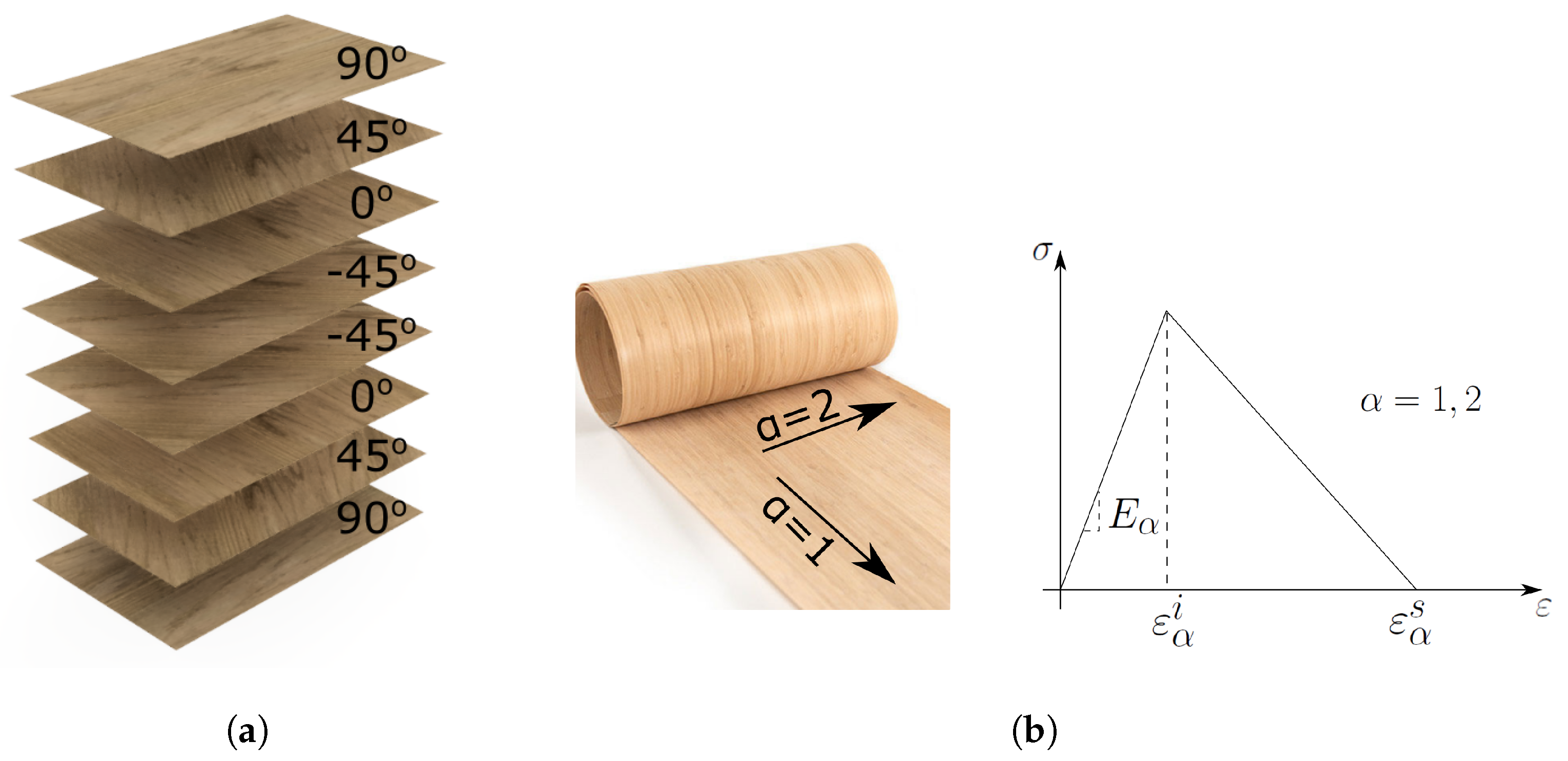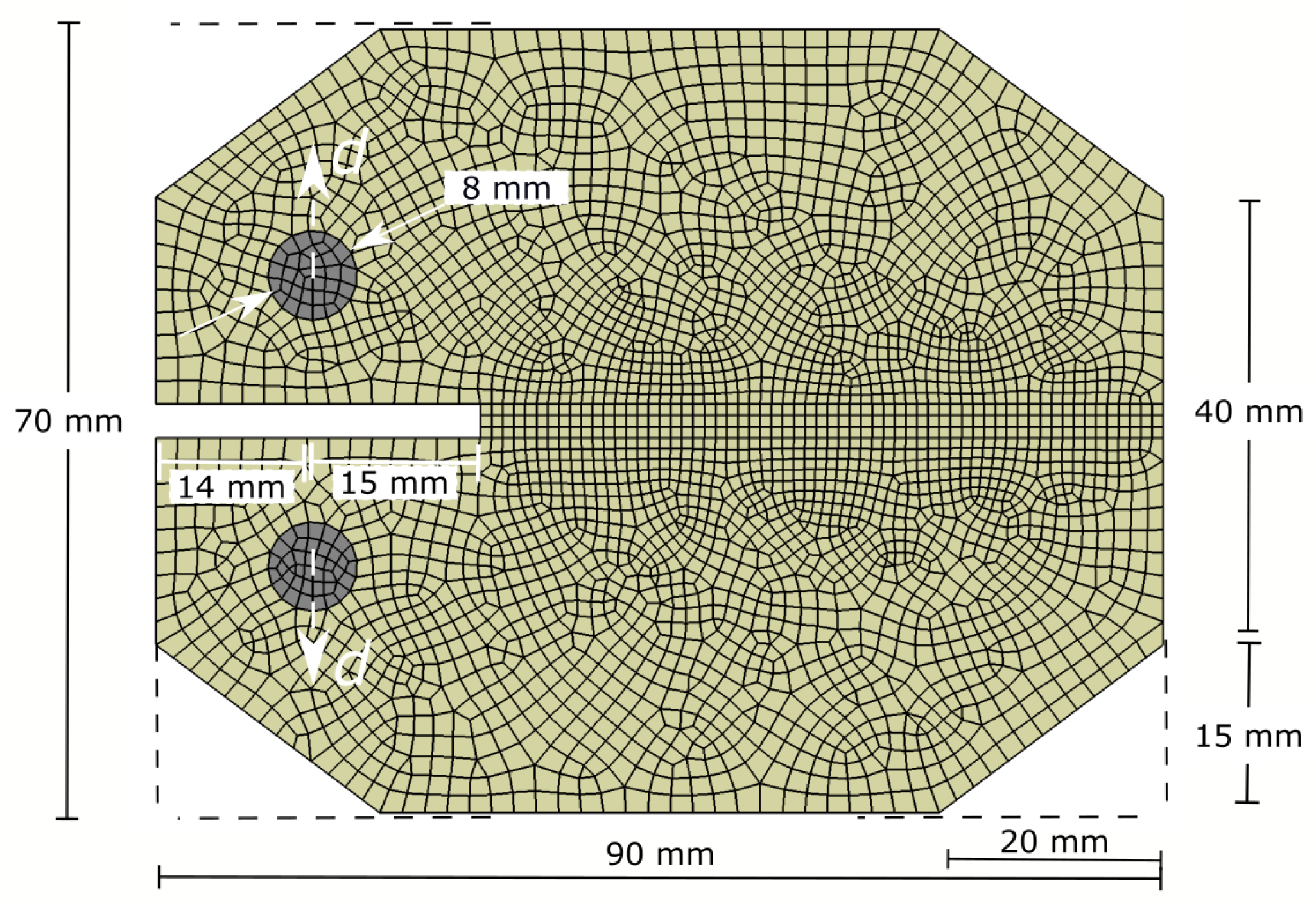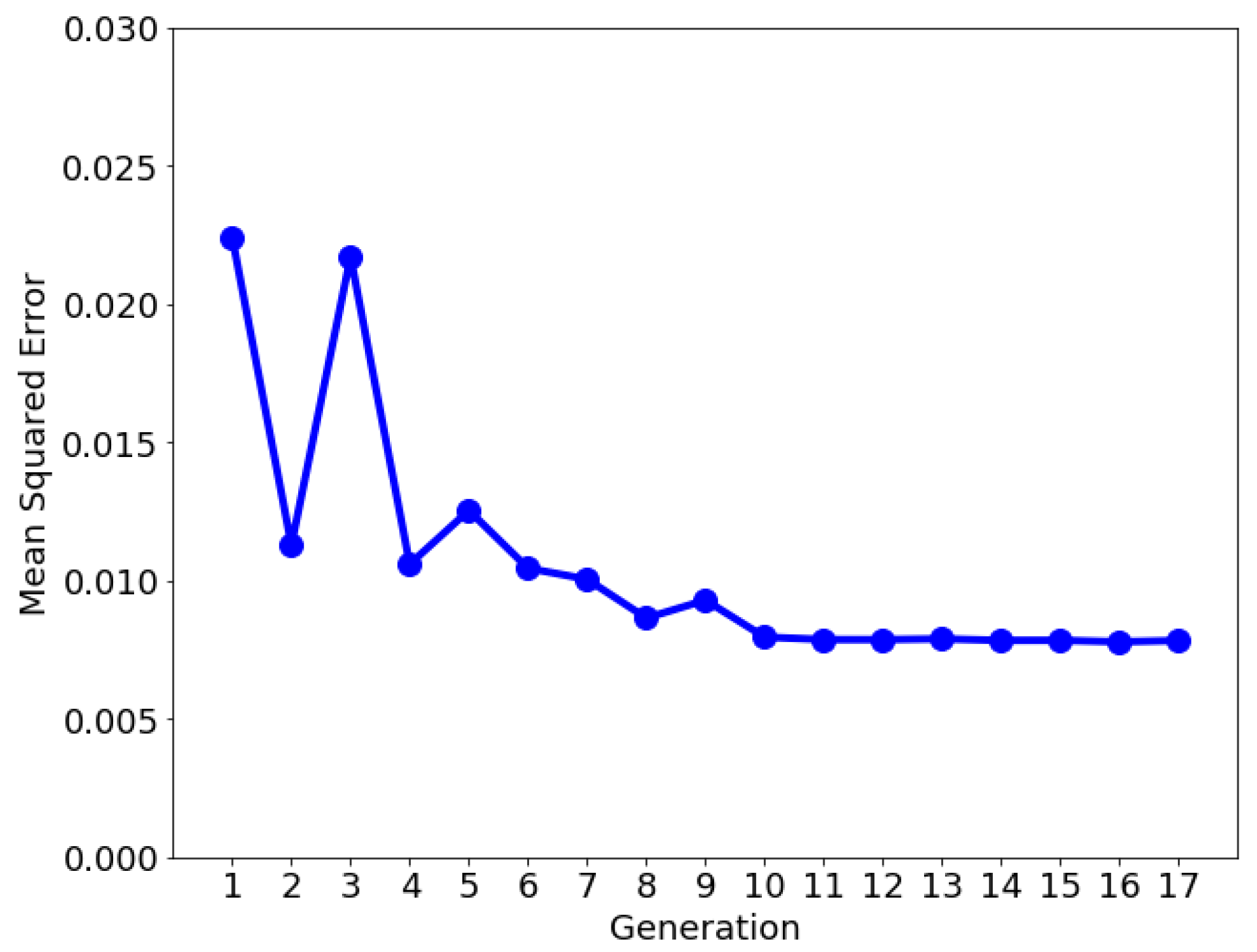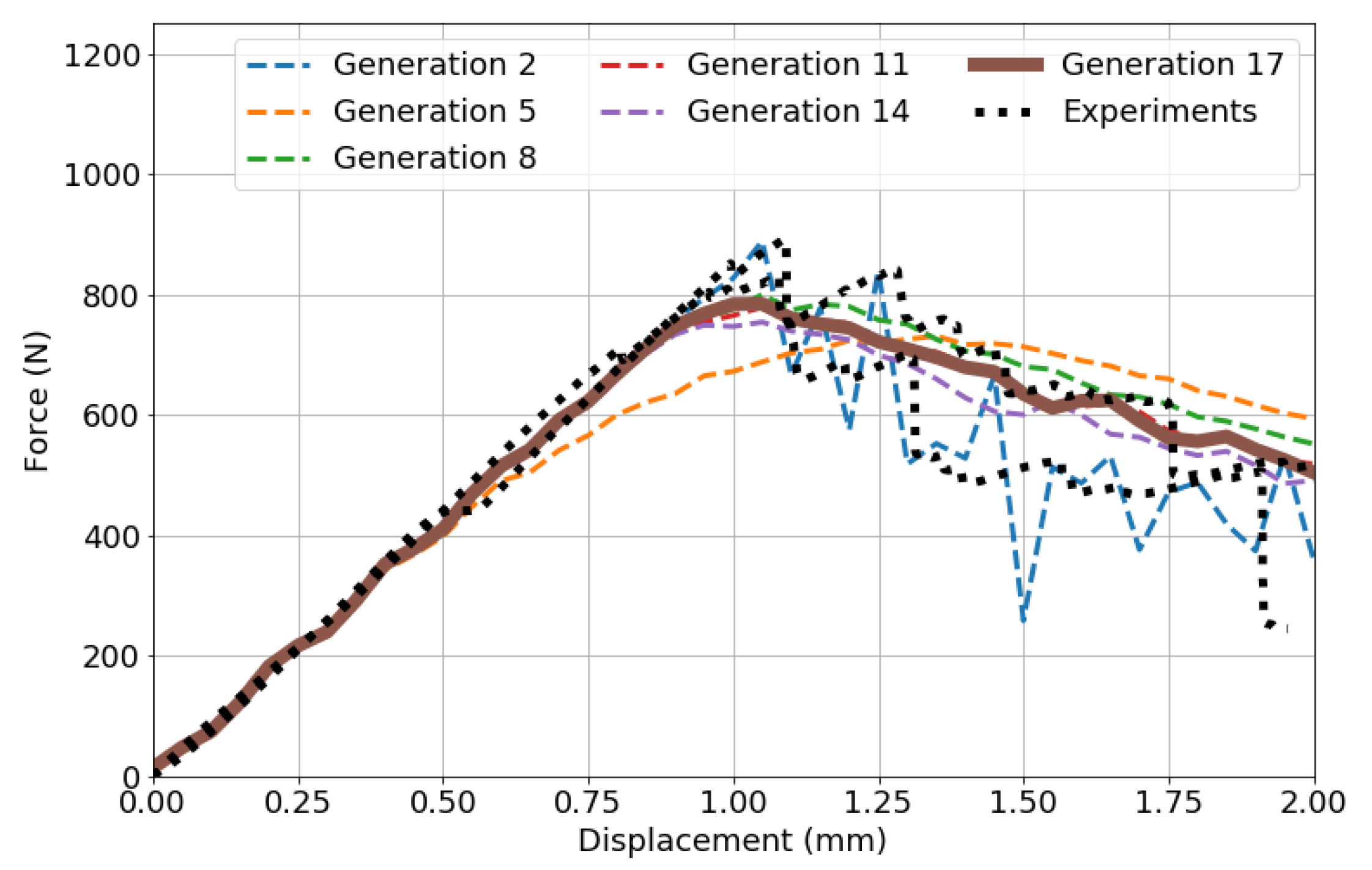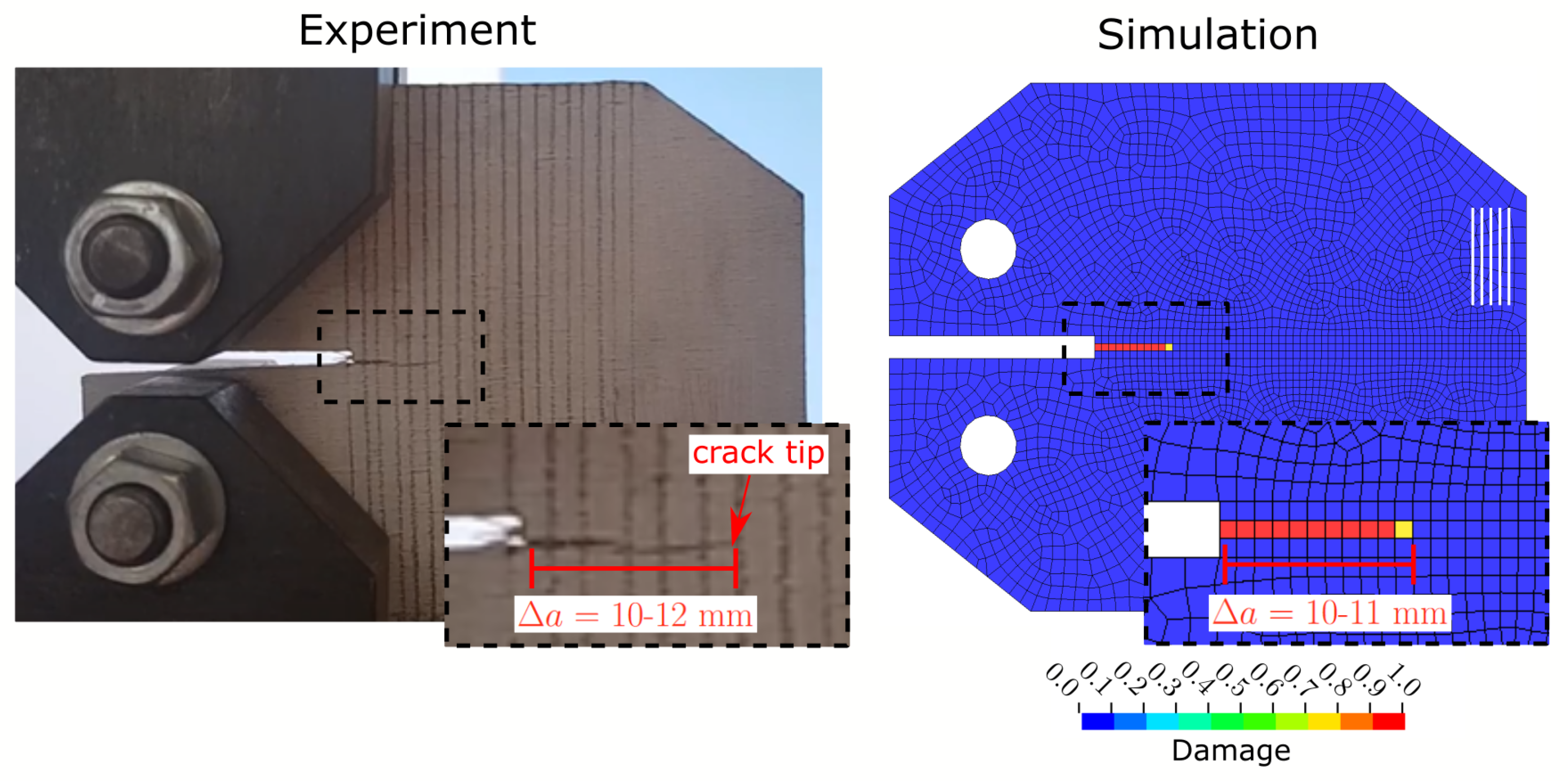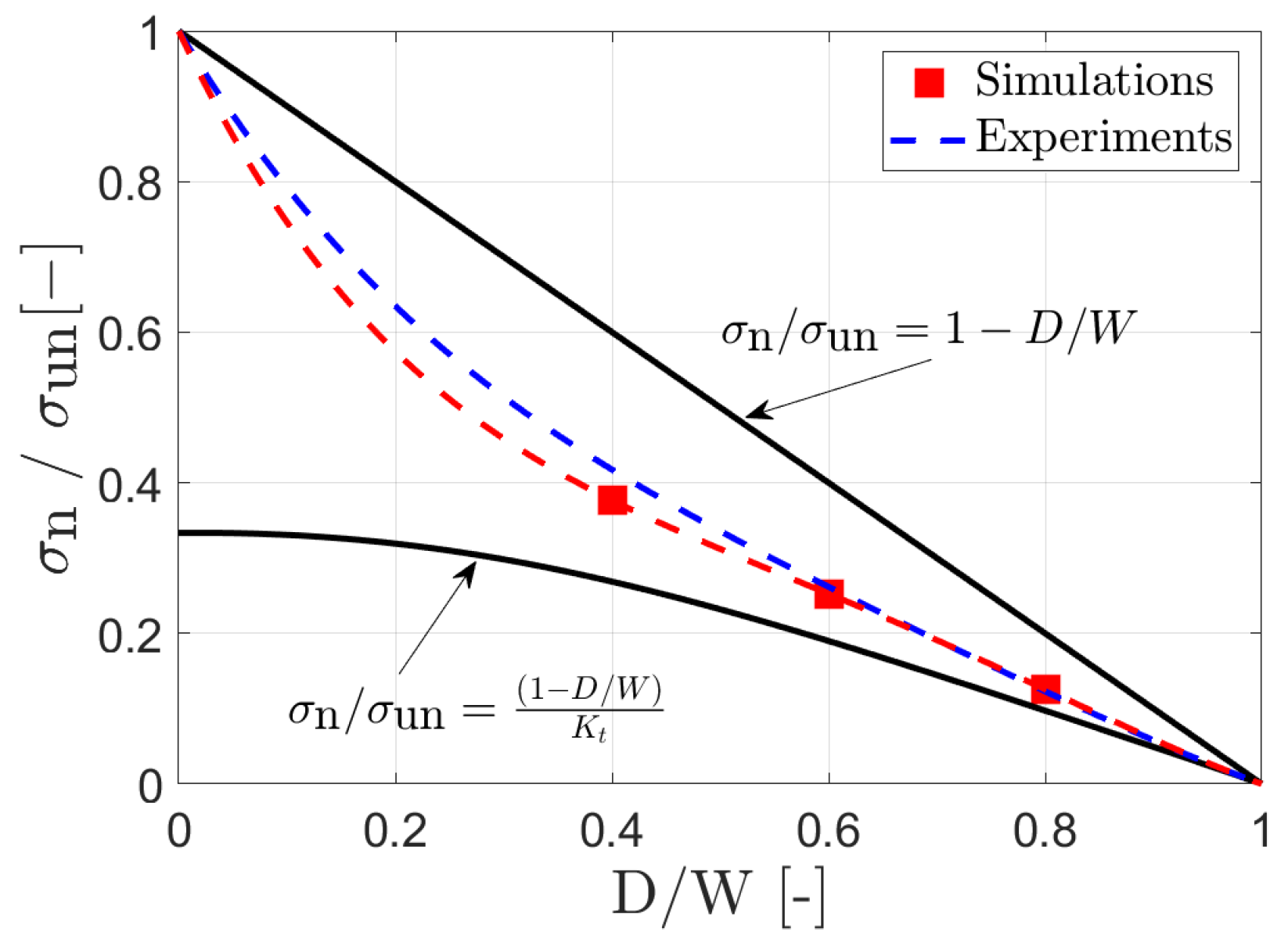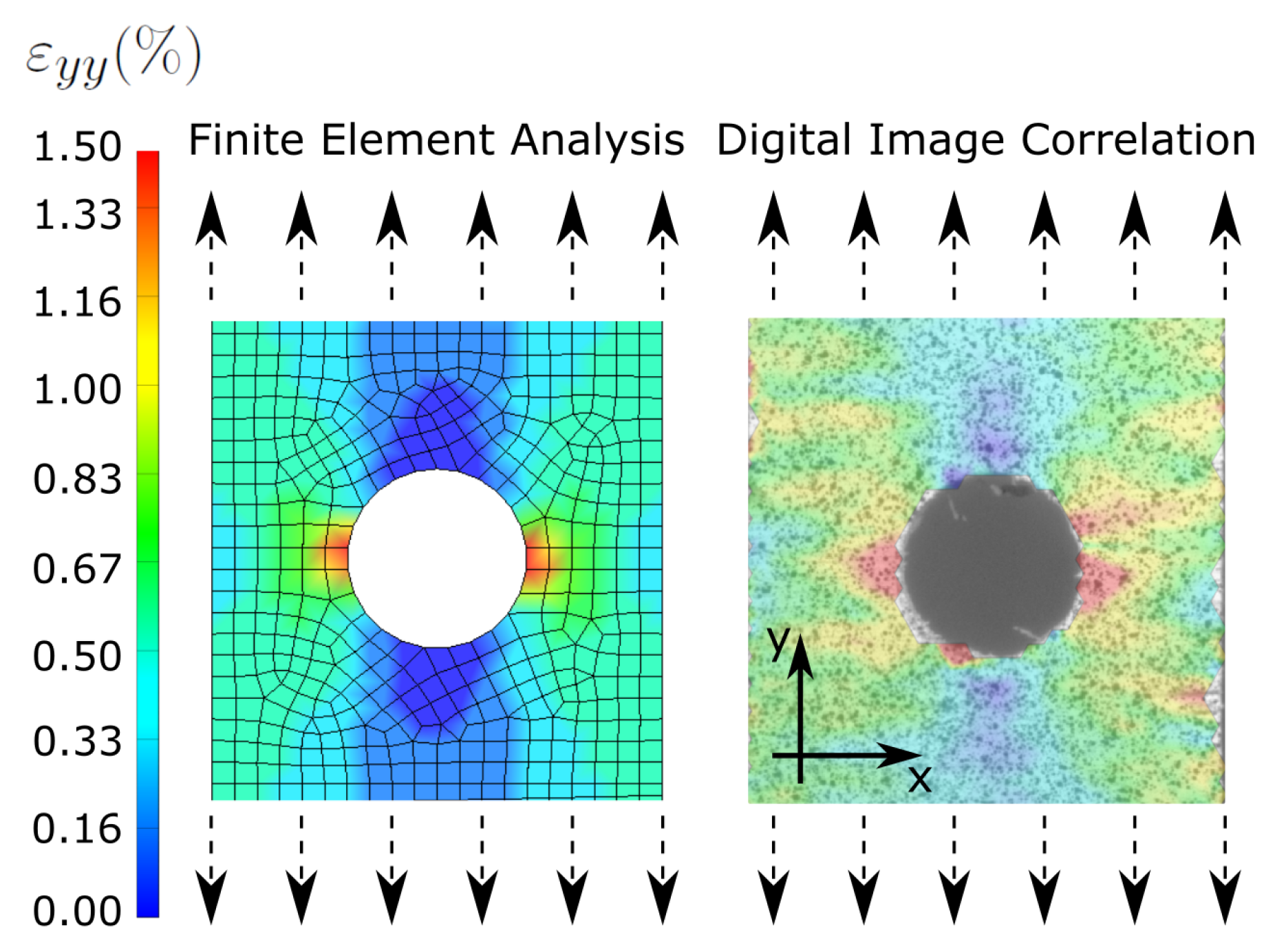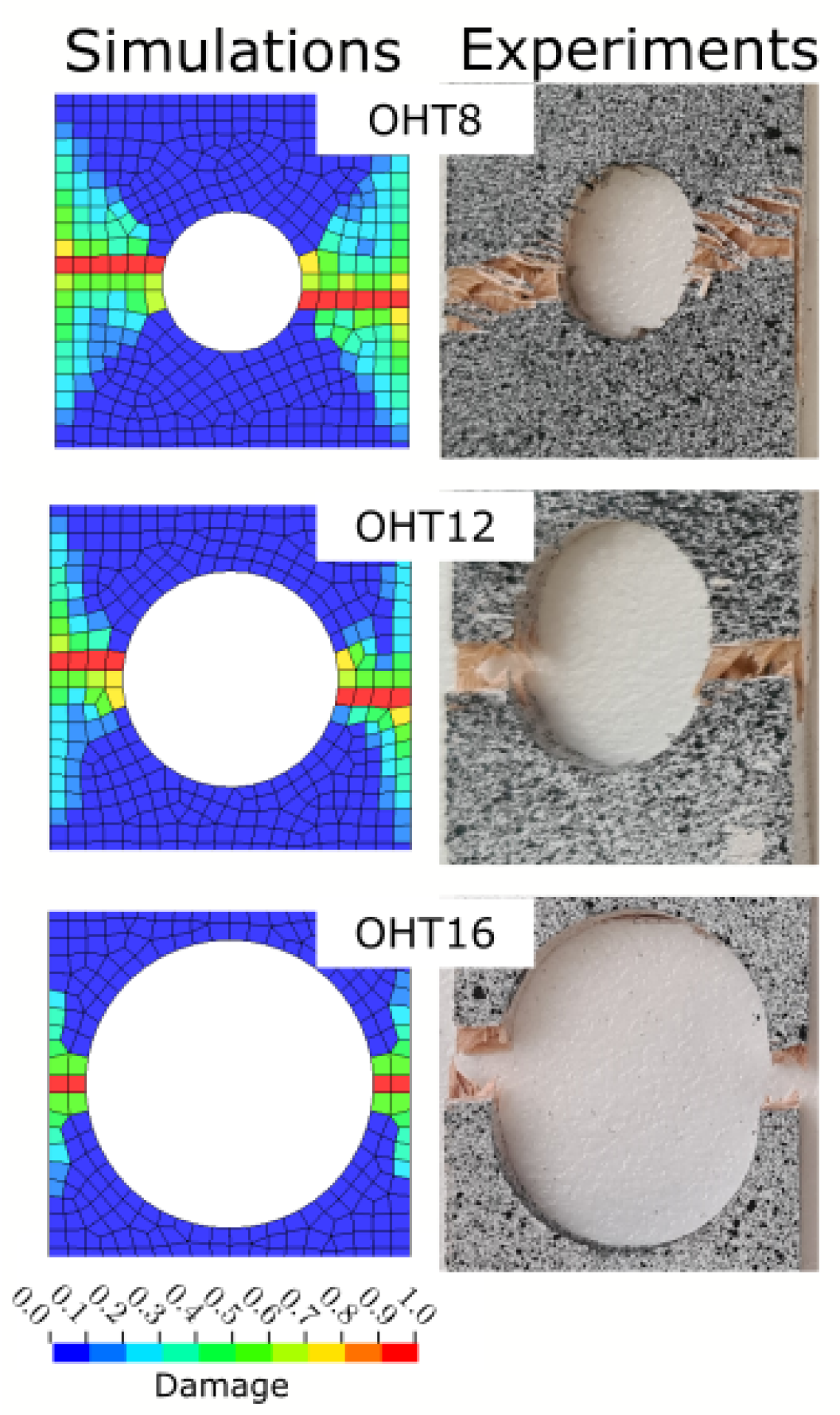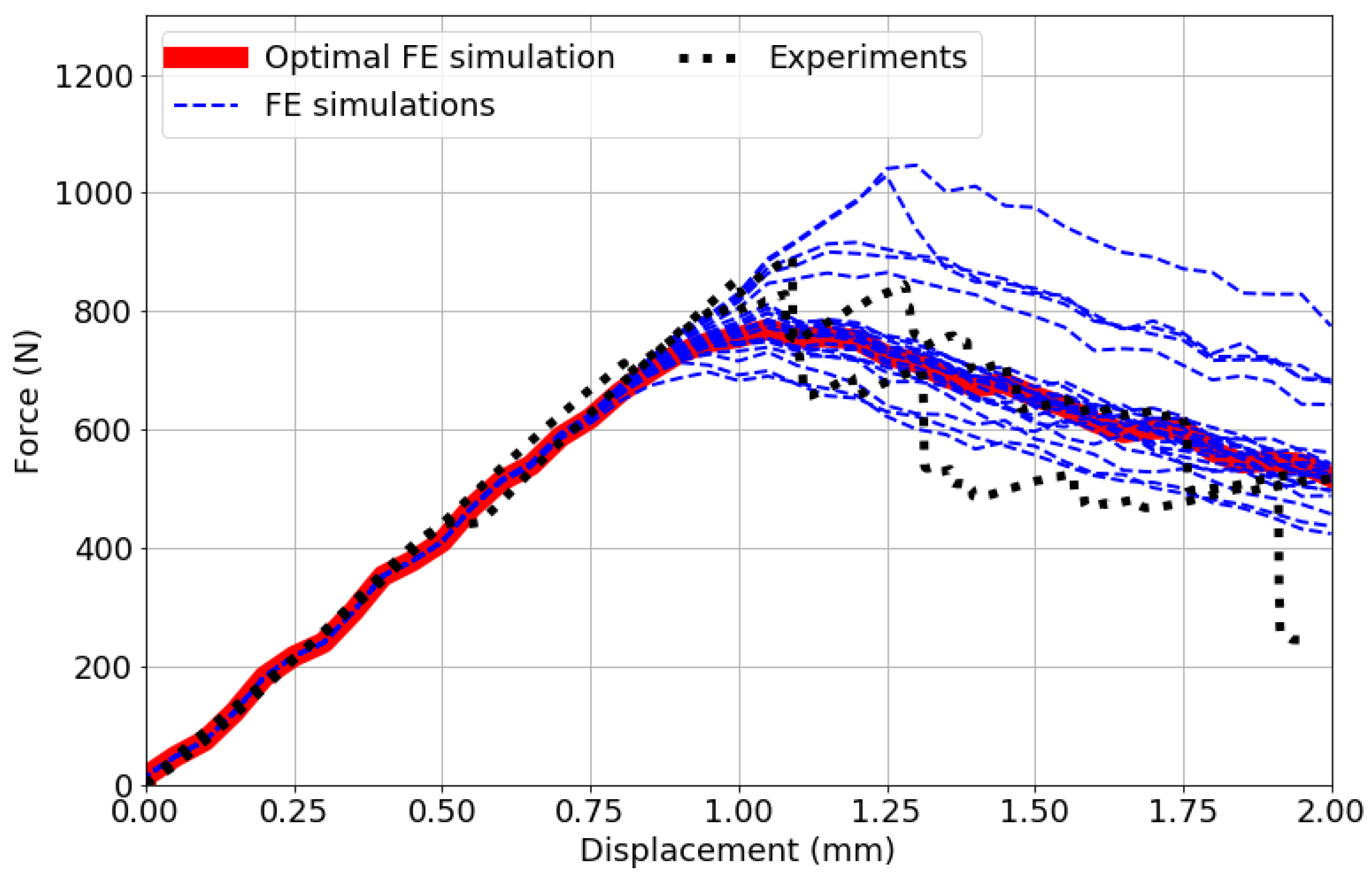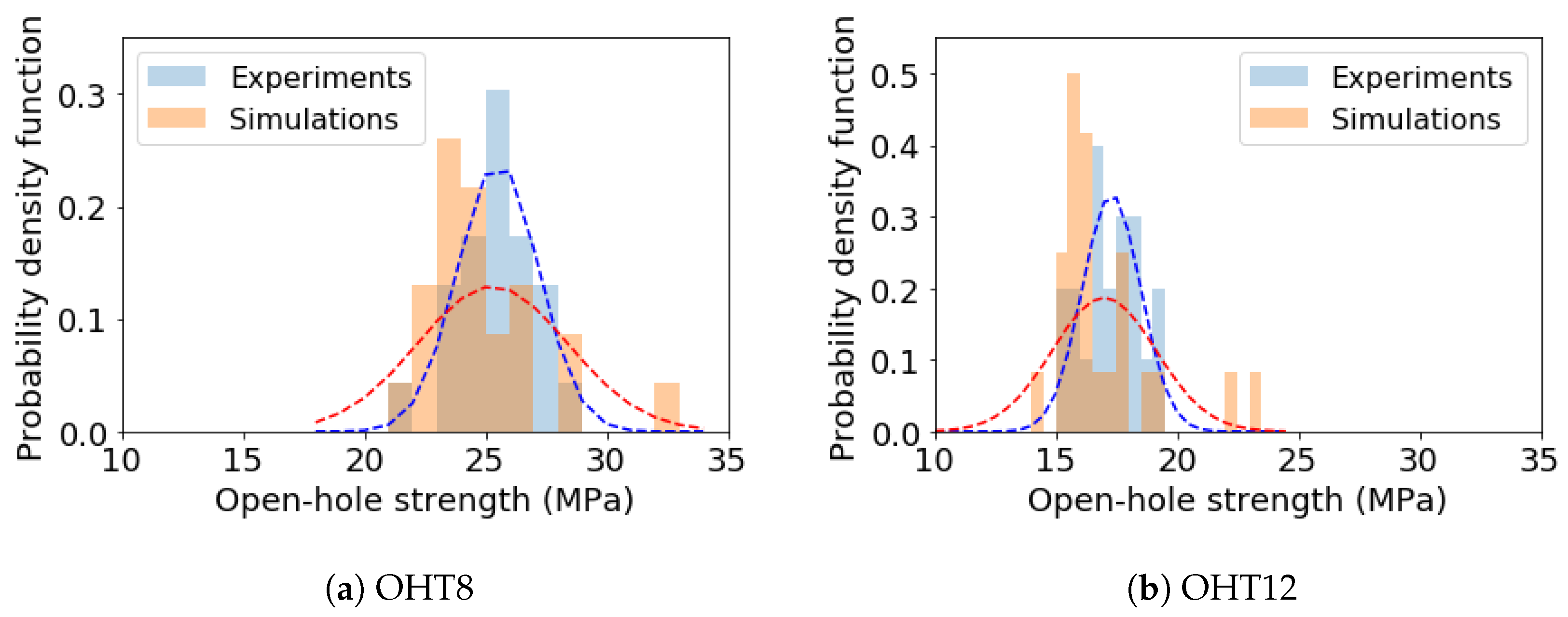1. Introduction
To advance the aim of mitigating greenhouse gas emissions, the utilisation of wood-based materials will contribute significantly due to wood’s ability to store carbon. In the context of transportation, particularly electromobility, sustainability has become increasingly important in the last decade [
1]. To minimise the CO
2 footprint of electromobility structures over their entire life cycle, attention is being directed towards sustainable materials such as wood. Opposed to state-of-the-art lightweight materials such as aluminium or fibre reinforced plastics, wood has a significantly lower carbon footprint. This reduces greenhouse gas emissions on the material level prior to production. Furthermore, lightweight construction holds significant importance in cutting down on in-service energy requirements. Wood, with its favourable combination of low density and good mechanical properties, presents a promising candidate for the use as a sustainable lightweight material in vehicle construction. Given the present reliance on simulation in the development of vehicle structures, it is essential to establish efficient simulation techniques for the safe and reliable design of thin wooden structures as a sustainable alternative in transport applications [
1].
Over the past three decades, various engineered wood products, such as glue-laminated timber and cross-laminated timber, have gained widespread acceptance. Since these products require up to 45 mm thick boards, thinner alternatives in the form of laminated veneer lumber have been explored [
2]. Recently, the integration of thin wooden panels into automotive door panels has been studied. Kaese et al. [
3] and Heyner et al. [
4] studied veneers in multi-material systems for future vehicle structures in the publicly funded project “For(s)tschritt” by the German federal ministry of economic affairs [
1]. The study contained the development of a hybrid wood-steel structural component subjected to crash loads. A laminated veneer lumber beam, hybridised with thin steel strips, was shown to compensate the low elongation at fracture and ensure the structural integrity. Although the wood–steel hybrid beams showed high energy absorption and stable failure in the wooden component, they were not able to achieve the maximum deformation and exceeded the target weight as opposed to conventional steel beams used in current vehicle doors. Therefore, further optimisation is required to make wood-based materials a viable option for sustainable vehicle structures. This motivates the work presented in this paper, aiming to explore highly efficient simulations to design and certify future sustainable structures made from wood.
It has been found that well-established mechanical tests developed for fibre-reinforced polymers (FRPs) can also be applied to thin wood veneer laminates [
5], particularly when subjected to tensile loads [
6]. The results of standard tensile, compact tension, and open-hole tension tests indicate that it is possible to characterise the elastic and strength properties, as well as the damage resistance, of these materials. As the mechanical behaviours of FRPs and wood veneer laminates under tensile loads are comparable, these experimental findings motivate the present study to adopt efficient finite element (FE) simulation methods from FRPs to thin wooden materials.
Finite element analysis (FEA) of progressive damage can be broadly categorised into discrete or continuous methods. Discrete approaches directly integrate fracture into the FE formulation. The cohesive zone model (CZM), a fracture energy-based approach, is the most commonly utilised discrete tool in FEA and is typically available in most commercial FE software packages. To eliminate the need for prior knowledge of crack paths in CZM, more advanced enrichment techniques based on the partition of unity have been developed for mesh-independent modelling of arbitrary fractures [
7,
8]. Although discrete techniques enable the precise modelling of cracks, they also lead to increased computational cost and complexity.
Continuum damage models preserve the FE mesh continuity by decreasing local stiffness to account for damage in a distributed manner. Continuum damage mechanics (CDM) takes into account progressive degradation, where the loss of stiffness can be attributed to a series of microcracks. Early CDM-based simulations of FRPs were conducted in the 1990s [
9,
10]. Due to its ease of implementation and computational efficiency, CDM has become a popular framework for simulating progressive damage in FRPs, such as in axial crushing [
11], impact analysis [
12], compression after impact tests [
13], bi-axial load cases [
14], and the prediction of fibre kinking [
15].
Compared to studies on FRPs, research on wood and wood-based materials using numerical methods is relatively scarce. Although several 3D constitutive CDM-based material models have been developed (e.g., [
16,
17,
18,
19,
20]), many of these models are implemented in user-defined subroutines, which limits their general use. In addition, 3D material models typically require a large number of input parameters, and hence a comprehensive calibration procedure is needed [
16]. Rahman et al. [
21] investigated built-in CDM-based material models in the commercial FE software LS-DYNA and found that most FRP models are applicable to wood when considering ply-based input parameters.
Irrespective of the applied material model, it is important to consider how to obtain the corresponding FE input data, particularly when simulating progressive damage where some parameters cannot be measured in isolated experimental tests. When computationally efficient FE models are considered, data-driven calibration techniques have shown significant potential in providing a transparent and objective means of determining optimal input parameters. Examples include the use of machine learning methods [
22,
23] and the application of genetic algorithms (GA) [
24,
25].
This paper presents a ply-based material model in combination with a GA-based calibration procedure for the efficient FE simulation of progressive damage in thin wood laminates, including the consideration of uncertainty.
Section 2 describes the material model and its incorporation into an efficient FEA in the commercial software LS-DYNA. The input parameters are calibrated in
Section 3 by means of a data-driven calibration algorithm.
Section 4 validates the FE framework against experimental results obtained from a range of open-hole tension tests. The benefits and limitations are discussed in
Section 6 before concluding remarks in
Section 7.
6. Discussion
The results of the validation in
Section 4 show that the efficient FE simulation and GA-based calibration technique can be successfully applied to wood veneer laminates. While the simulation results correlate well qualitatively and quantitatively with experimental measurements, it is important to highlight other benefits and fundamental limitations of the presented computational strategy. Every FE simulation is completed within 2 min on a conventional computer with four CPUs. The use of high-performance computing will further reduce computation times significantly.
6.1. GA-Based Uncertainties
The fast computation enables the application of statistical analyses [
23,
36], probabilistic approaches, and data-driven machine learning techniques [
22]. This is particularly beneficial for the consideration of inherent material uncertainties which is an important aspect when analysing natural materials such as wood veneers. The results in
Section 5 demonstrate that the GA-based calibration of FE input ranges present an efficient and simple way to successfully include uncertainty into the simulation of wood veneer laminates subjected to progressive damage.
A total number of 408 FE simulations were required to reach convergence within the GA-based calibration procedure. Uncertainty is incorporated by considering 24 FE simulations from the last GA generation with varying input parameters. In comparison, a similar study on progressive damage analyses in FRP composites applied a Markov Chain Monte Carlo (MCMC) method to include uncertainty [
23]. The algorithms required the evaluation of 260,000 FE models, and approximately 5000 simulations used after convergence to represent uncertainty. This comparison shows that the GA-based calibration shown in
Section 3 requires significantly less FE results. It should be noted that the GA-based uncertainty quantification failed to accurately predict the variability (measured by coefficients of variation in
Table 8 in the two OHT tests. To more effectively predict variability, a more rigorous method, such as MCMC, is recommended, although this will result in a significant increase in computational cost.
6.2. Capabilities
The short computation times of around 2 min can enable additional analyses beyond typical deterministic simulations at the coupon-level. The efficient nature of the presented computational method will enable the simulation of large-scale wooden components before costly and time-consuming prototyping, for example in the automotive sector [
1]. It also allows for exploring other applications virtually where wooden structures can be introduced for more sustainable material solutions. The efficient incorporation of uncertainty allows the consideration of inherent material variations with large-scale wood veneer structures.
Another positive aspect of the presented progressive damage model is that it is easy to calibrate and to use. As outlined in
Section 3, only four damage input parameters need to be calibrated through GA-based simulations of CT tests. Thanks to the limited number of input parameters and the proposed objective and automated calibration using GA, this damage model is easy to use which makes it accessible to non-expert users.
6.3. Limitations
The results in the qualitative damage analyses of CT tests in
Figure 6 and OHT tests in
Figure 10 show that damage localises in one row of elements. This is a typical shortcoming of local CDM-based material models such as the one used here and presented in
Section 2.2. Damage is expected to be more distributed irrespective of the element height. The scaling of the damage saturation strains according to Bazant’s crack band scaling in Equation (
4) provides a reasonable solution while maintaining computational efficiency. Non-local damage analyses [
34] or gradient-based phased field methods [
37,
38] offer more mesh-independent solutions resulting in more realistic qualitative representations of damage. Note that the calibration of such non-local methods becomes more challenging and the computational cost is increased.
If delamination becomes a dominant failure mode, higher fidelity models are needed to capture progressive damage within the interfaces of the laminates. The individual plies with different fibre/grain orientation can be stacked up with embedded cohesive interfaces between them [
12]. Similar to the remark about the incorporation of non-local CDM, the computational cost of such higher fidelity models increases significantly, hence limiting their coupling with data-driven calibration methods. With regards to the investigated mechanical tests here, both CT and OHT analyses revealed that delamination can be considered as negligible [
6].
Since the presented study investigates laminates subjected to tensile loads, it remains to be seen whether the simulation of compressive damage in wood veneer laminates can be equally adopted from FRPs. The densification capabilities of wood and its accompanied plastic behaviour in compression may necessitate a more comprehensive calibration process for a compressive damage–plasticity model as opposed to veneers subjected to tensile loads.
6.4. Future Research
The limitations outlined in
Section 6.3 motivate the definition of immediate future research. Non-local FE models [
34] will be calibrated and applied to wood veneer laminates to enable the simulation of mesh-independent damage growth.
It is important to investigate other relevant load cases such as compression, bending, transverse impact, and crushing of wood veneer laminates. With the help of such experimental studies, the presented FE simulations can be enhanced to incorporate compressive damage evolution. These tests would also expand the validation cases to clearly map out benefits and limitations with respect to real-world applications.
In finding thin-walled sustainable materials, the sole use of wood veneers might not satisfy certain stiffness or strength requirements. This motivates research towards hybrid materials consisting of wood veneers and sustainable fibre-reinforced materials. The findings presented here will help in the virtual design and optimisation of such hybrid materials by combining progressive damage modelling of wood veneers with well-established concepts on fibre-reinforced materials.
